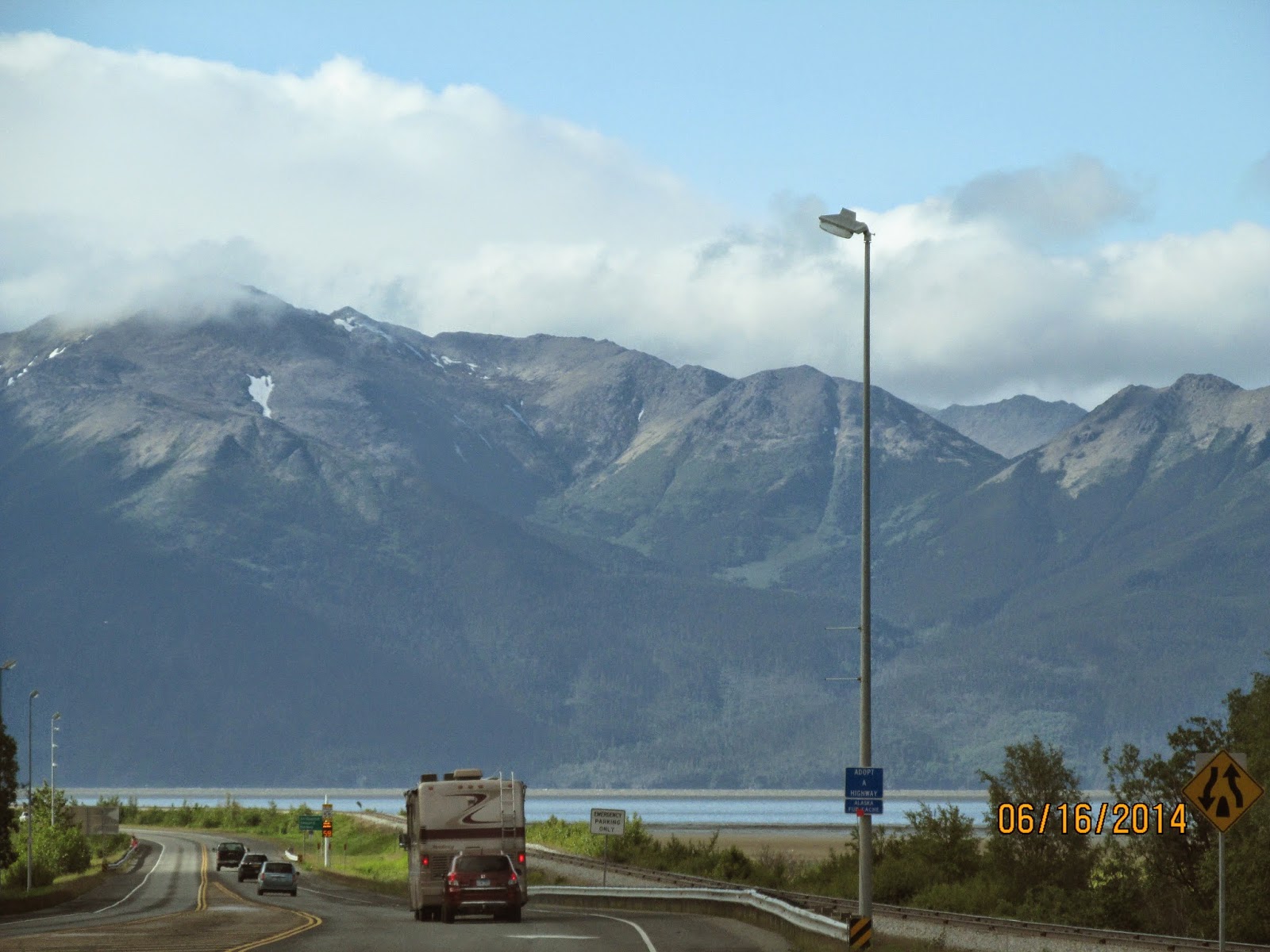There were several things in Anchorage we hadn't done or seen so we decided to spend another day there. Our friends, Jim and Dee wanted to visit a museum or two and do some other things. The rest of us decided to spend some more time down town and ride the informational trolley/tour. The driver narrated as we traveled by some of the interesting areas of Anchorage. We went by the Captain Cook statue as he relayed some historical facts such as that he named the inlet after himself, thus the Cook Inlet (not hard to figure out). Another interesting area was Earthquake park where many homes slid into the sea during the 9.2 earthquake that hit on Good Friday in 1964. When we all returned for the evening, Gary made reubens us.
We left Anchorage today, Tues., a little before 9 a.m. The sun was shining but that didn't last long as you can see in the pictures. As we traveled down the Seward Highway, it became cloudy, rainy, windy, and cold. With each stop another layer went on. We didn't see any wildlife along the way and didn't make nearly as many stops as we would have in good weather. There are lots of turnoffs along this route that travels along the Turnagain Arm. It was so named because Captain Cook, looking for a passage through, came to a dead end and had to turn around again. Turnagain Arm is known for having one of the world's remarkably high tides with a range of more than 33 feet. There are warnings all along the way to not go out on the mud flats at low tide. As the tide goes out, the fine glacier silt mud can harden like concrete around a foot and the unfortunate victim could be stuck there until the tide comes in and engulfs them. Needless to say we were not tempted. There are beluga whales along this area but, of course, we didn't see any as the wind was kicking the water up pretty good and it was so cold that we didn't stay out looking for very long.
After we got set up in the Portage Valley RV Park, we drove to a visitor center and then on the Whittier. Prior to 2000, the only ways to access Whittier were by rail, sea, or air. Now the train and road traffic take turns using the 2.5 mile long tunnel to reach the town. It is the longest tunnel in North America and certainly the longest combined rail and highway one. Vehicles actually drive on the rail tracks. It is quite amazing to think of what a massive feat it was to build this tunnel in 1941. It was built during WWII for transporting fuel and other supplies into Alaska. They also built huge building to house the military personnel. One was 14 stories high with 198 apartments. Another had 1000 apartments and was once the largest building in Alaska. It was called the "city under one roof" with a hospital, bowling alley, theater, swimming pool, and shops. The military pulled out of this area in the 50s and the buildings were left and are now nothing but a shell.
There are many glaciers and waterfalls around Whittier.
We topped the day off with delicious Halibut at the Saltwater Seafood Cafe.
View in the clouds along Turnagain Arm
Also Turnagain arm
Rainbow behind us
Ice from glacier at Portage
One of many glaciers around Portage
The only moose seen today
One of the abandoned military buildings and me in the rear view mirror. lol
Water rushing down from a glacier
More glaciers









No comments:
Post a Comment